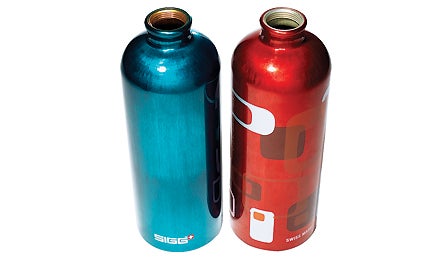Does Your Aluminum Bottle Contain BPA?

'(Photo by Sethhughes.com/Wonderful Machine)'
Health concerns about Bisphenol-A (BPA), an organic compound that until recently was commonly used in polycarbonate bottles, reached critical mass in 2007. News about BPA’s purported link to a variety of health problems like infertility and cancer caused consumers–and retailers–to scramble for alternatives. Sales of aluminum bottles soared.
But as SNEWS–our sister publication and the leading trade magazine for the outdoor industry–was first to report, not all aluminum bottles are BPA-free. Studies show–and popular makers have acknowledged–that the epoxy linings in most aluminum bottles have contained trace amounts of BPA.
Whether BPA is a real safety concern is hotly debated; Canada’s health ministry, an early critic, recently retracted its warnings. And some manufacturers argue that the BPA in high-grade epoxies won’t leach into your water.
But many bottles still contain BPA, especially off-brand models coming from China. Want to play it safe? Stick with unlined steel bottles, or aluminum models from SIGG and Laken. Both companies switched to certified non-BPA linings in summer 2008. SIGG bottles without BPA generally have a flat, yellowish coating (above right) instead of a clear, glossy coat over brushed metal (left). Laken made it even simpler–they’ve labeled their bottles for easy identification. To learn more, go to snewsnet.com/bpa.